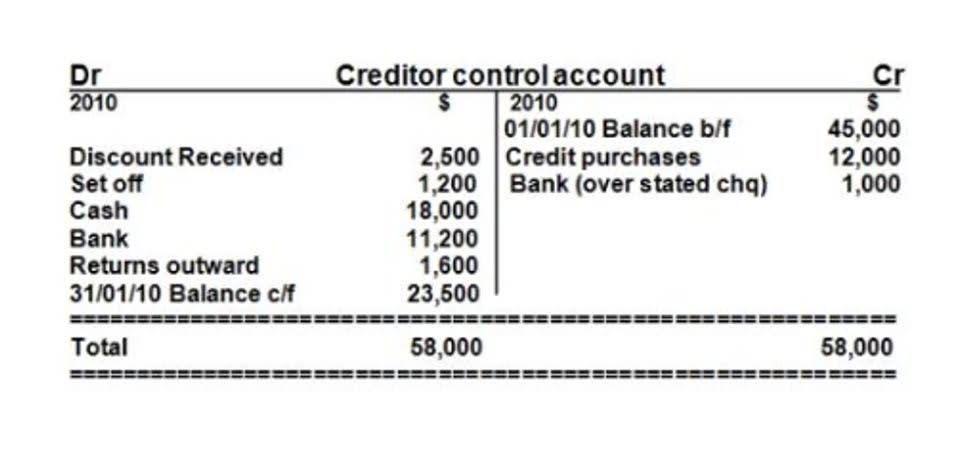
For clarity and consistency, lay out the accounts in the order they appear in the balance sheet. When we originally wrote this article, Microsoft’s working capital fluctuated a lot, with current assets generally increasing faster than current liabilities (increasing the need for cash to grow the business). The last three years looks much better, however, with current liabilities increasing faster than current assets. Current assets, in fact, have been decreasing, while current liabilities have been growing largely due to increases in deferred revenue and income taxes payable. Software companies generally tend to have a positive change in working capital cash flow because they do not have to maintain an inventory before selling the product.

. How to find change in NWC on the cash flow statement?

Calculating net working capital for a single point in time involves a straightforward subtraction. This calculation provides a static view of a company’s short-term financial capacity at a specific moment. Investors can also see the usefulness of NWC in calculating the free cash flow to firm and free cash flow trial balance to equity. But if there is an increase in the net working capital adjustment, it isn’t considered positive; rather, it’s called negative cash flow. A variety of invoicing improvements can improve working capital and cash flow.
Credit Risk Management

Because of all these moving parts, there is no “one-size-fits-all” rule for net working capital. A good level of the above indicates that the business has enough liquidity to meet the current financial obligation, which is extremely important to run daily operations smoothly. A fall in the amount of this capital is detrimental to the entity and leads to doubt about the efficiency of the management. Understand how operational shifts impact its funding capacity and daily operations.

How Can I Improve My Net Working Capital Position?
Sometimes, companies also include longer-term operational items, such as Deferred Revenue, in their Working Capital. Populate the schedule with historical data, either by referencing the corresponding data in the balance sheet or by inputting hardcoded data into the net working capital schedule. If a balance sheet has been prepared with future change in net working capital forecasted periods already available, populate the schedule with forecast data as well by referencing the balance sheet.
How do we record working capital in the financial statementse.g I borrowed 200,000.00 Short term long to pay salaries and other expenses. Put together, managers and investors can gain critical insights into a business’s short-term liquidity and operations. In this case, the retailer may draw on their revolver, tap other debt, or even be forced to liquidate assets. The risk is that when working capital is sufficiently mismanaged, seeking last-minute sources of liquidity may be costly, deleterious to the business, or, in the worst-case scenario, undoable. Hence, the company exhibits a negative working capital balance with a relatively limited need for short-term liquidity. Taken together, this process represents the operating cycle (also called the cash conversion cycle).

Asset Sale vs. Stock Sale: What’s Better for Your Exit Strategy?
This indicates an improvement in its short-term liquidity position, suggesting that it has more resources to meet its short-term obligations. If a company collects $30,000 of its accounts receivable, there is no change in working capital since the current asset Cash increased, https://lovenailsetterbeek.com/what-is-a-quickbooks-proadvisor-what-do-they-do/ and another current asset Accounts Receivable decreased. If the final value for Change in Working Capital is negative, the change in the current operating assets will increase more than the current operating liabilities. All companies strive to shorten their business cycle by collecting their receivables sooner or extending their accounts payable.
- The formula from there is to add together the cash, marketable securities, accounts receivable, and inventory, then subtract accounts payable.
- It means that it can generate revenue without increasing current liabilities.
- However, the net amount is calculated by deducting the current liabilities form the assets, which gives a clear idea about the funds available.
- The formula to calculate working capital—at its simplest—equals the difference between current assets and current liabilities.
- Net working capital represents the difference between a company’s current assets and its current liabilities.
- Achieve real-time cash forecasting to preempt tight liquidity and free up working capital.
Formula
- The inverse of having a negative working capital indicates that the company owes more than it has in its cash flow.
- Every business enterprise extensively uses this metric to understand the economic or financial condition of the enterprise.
- A company expanding rapidly might see a significant change in NWC as it invests in more inventory or extends credit to more customers.
- But if the change in NWC is negative, the net effect from the two negative signs is that the amount is added to the cash flow amount.
You have to think and link what happens to cash flow when an asset or liability increases. If you find your working capital isn’t where you’d like it to be, or if the changes are causing cash flow headaches, don’t despair! Effective working capital management is all about finding the right balance – enough liquidity to operate smoothly, but not so much cash tied up that it’s not earning a return. See how these everyday business activities directly impact working capital and, consequently, cash flow? A decrease could mean you’re efficiently managing inventory (good!), or it could mean you’re struggling to pay your suppliers (definitely not good). Learn to assess changes in a company’s short-term financial health and understand what these shifts reveal about its liquidity.
